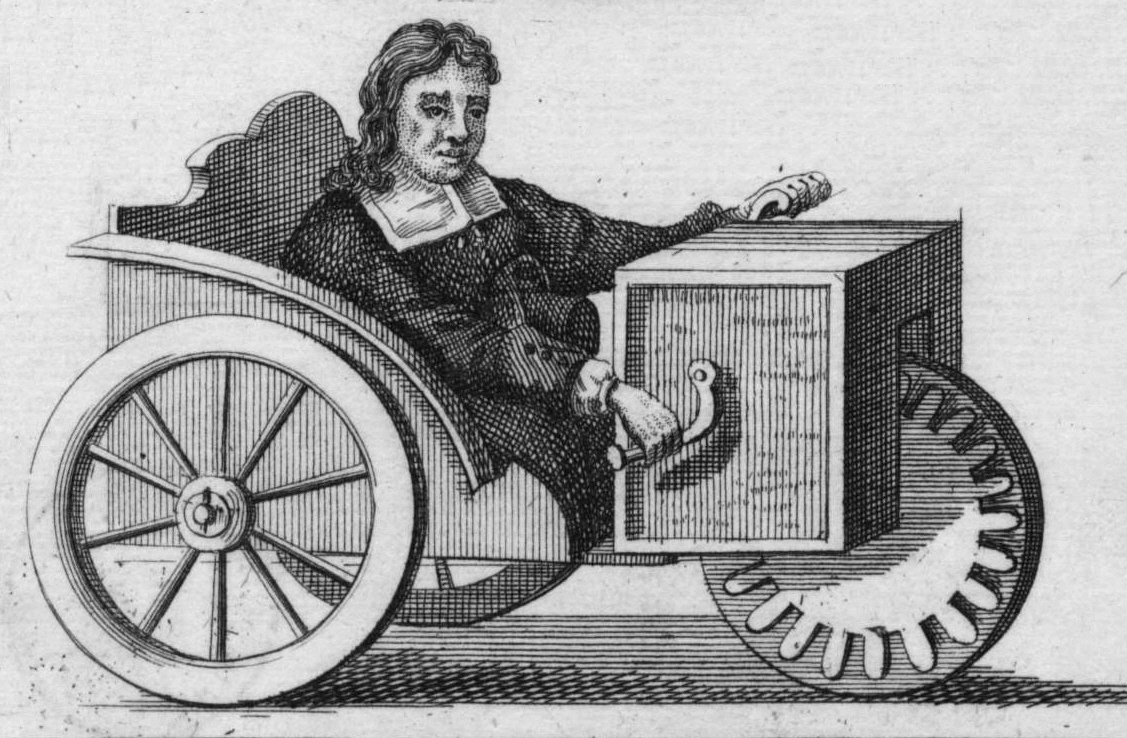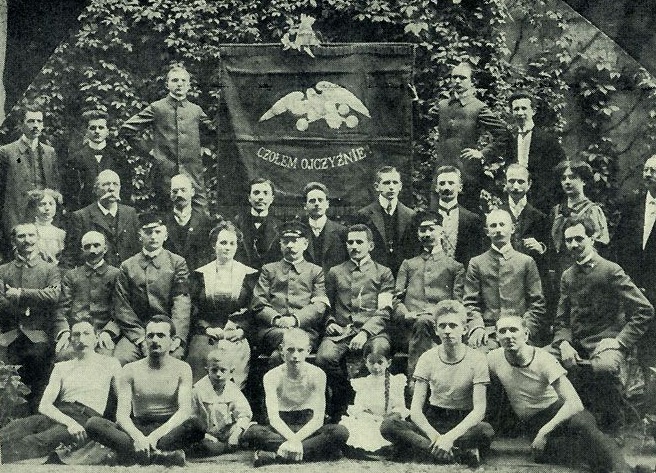|
Sokół 1000
The Sokół 1000 (also known as CWS M111) was the heaviest Polish pre-war motorcycle manufactured by the PZInż works, for both civilian and military use by the Polish Army. Production of the model 1000 started in 1933 and lasted until the outbreak of World War II in 1939. A standard completion was a sidecar combination. History In late 1927 the Polish Army created a specification for a general purpose heavy motorcycle that was to replace the Harley-Davidson motorcycles used until then. By 1932 the Centralne Warsztaty Samochodowe works prepared a short series of roughly 200 CWS M55 motorcycles equipped with a sidecar. The bike itself was based upon the Harley-Davidson, while the engine was almost a direct copy of the Indian. However, the machine proved to be less reliable. In 1931 it was decided at ''Państwowe Zakłady Inżynierii'' to prepare a completely new heavy motorcycle for the use of the Polish Army. Subsidized by the state, the PZInż holding extensively tested an ... [...More Info...] [...Related Items...] OR: [Wikipedia] [Google] [Baidu] |
Tricycle
A tricycle, sometimes abbreviated to trike, is a human-powered (or gasoline or electric motor powered or assisted, or gravity powered) three-wheeled vehicle. Some tricycles, such as cycle rickshaws (for passenger transport) and freight trikes, are used for commercial purposes, especially in the developing world, particularly Africa and Asia. In the West, adult-sized tricycles are used primarily for recreation, shopping, and exercise. Tricycles are favoured by children and senior adults for their apparent stability versus a bicycle; however a conventional trike has poor dynamic lateral stability, and the rider must take care when cornering to avoid tipping the trike over. Unconventional designs such as recumbents have a lower centre of gravity so require less care. History A three-wheeled wheelchair was built in 1655 or 1680 by a disabled German man, Stephan Farffler, who wanted to be able to maintain his mobility. A watch-maker, Farffler created a vehicle that was powered ... [...More Info...] [...Related Items...] OR: [Wikipedia] [Google] [Baidu] |
Motorcycles Introduced In The 1930s
A motorcycle (motorbike, bike, or trike (if three-wheeled)) is a two or three-wheeled motor vehicle steered by a handlebar. Motorcycle design varies greatly to suit a range of different purposes: long-distance travel, commuting, cruising, sport (including racing), and off-road riding. Motorcycling is riding a motorcycle and being involved in other related social activity such as joining a motorcycle club and attending motorcycle rallies. The 1885 Daimler Reitwagen made by Gottlieb Daimler and Wilhelm Maybach in Germany was the first internal combustion, petroleum-fueled motorcycle. In 1894, Hildebrand & Wolfmüller became the first series production motorcycle. Globally, motorcycles are comparably popular to cars as a method of transport. In 2021, approximately 58.6 million new motorcycles were sold around the world, fewer than the 66.7 million cars sold over the same period. In 2014, the three top motorcycle producers globally by volume were Honda (28%), Yamaha (17%) ... [...More Info...] [...Related Items...] OR: [Wikipedia] [Google] [Baidu] |
World War II Vehicles Of Poland
In its most general sense, the term "world" refers to the totality of entities, to the whole of reality or to everything that is. The nature of the world has been conceptualized differently in different fields. Some conceptions see the world as unique while others talk of a "plurality of worlds". Some treat the world as one simple object while others analyze the world as a complex made up of many parts. In ''scientific cosmology'' the world or universe is commonly defined as " e totality of all space and time; all that is, has been, and will be". '' Theories of modality'', on the other hand, talk of possible worlds as complete and consistent ways how things could have been. ''Phenomenology'', starting from the horizon of co-given objects present in the periphery of every experience, defines the world as the biggest horizon or the "horizon of all horizons". In ''philosophy of mind'', the world is commonly contrasted with the mind as that which is represented by the mind. ''Th ... [...More Info...] [...Related Items...] OR: [Wikipedia] [Google] [Baidu] |
World War II Military Vehicles
In its most general sense, the term "world" refers to the totality of entities, to the whole of reality or to everything that is. The nature of the world has been conceptualized differently in different fields. Some conceptions see the world as unique while others talk of a "plurality of worlds". Some treat the world as one simple object while others analyze the world as a complex made up of many parts. In ''scientific cosmology'' the world or universe is commonly defined as " e totality of all space and time; all that is, has been, and will be". '' Theories of modality'', on the other hand, talk of possible worlds as complete and consistent ways how things could have been. ''Phenomenology'', starting from the horizon of co-given objects present in the periphery of every experience, defines the world as the biggest horizon or the "horizon of all horizons". In ''philosophy of mind'', the world is commonly contrasted with the mind as that which is represented by the mind. ''Th ... [...More Info...] [...Related Items...] OR: [Wikipedia] [Google] [Baidu] |
Military Motorcycles
A military, also known collectively as armed forces, is a heavily armed, highly organized force primarily intended for warfare. It is typically authorized and maintained by a sovereign state, with its members identifiable by their distinct military uniform. It may consist of one or more military branches such as an army, navy, air force, space force, marines, or coast guard. The main task of the military is usually defined as defence of the state and its interests against external armed threats. In broad usage, the terms ''armed forces'' and ''military'' are often treated as synonymous, although in technical usage a distinction is sometimes made in which a country's armed forces may include both its military and other paramilitary forces. There are various forms of irregular military forces, not belonging to a recognized state; though they share many attributes with regular military forces, they are less often referred to as simply ''military''. A nation's military may f ... [...More Info...] [...Related Items...] OR: [Wikipedia] [Google] [Baidu] |
Military Vehicles Of Poland
A military, also known collectively as armed forces, is a heavily armed, highly organized force primarily intended for warfare. It is typically authorized and maintained by a sovereign state, with its members identifiable by their distinct military uniform. It may consist of one or more military branches such as an army, navy, air force, space force, marines, or coast guard. The main task of the military is usually defined as defence of the state and its interests against external armed threats. In broad usage, the terms ''armed forces'' and ''military'' are often treated as synonymous, although in technical usage a distinction is sometimes made in which a country's armed forces may include both its military and other paramilitary forces. There are various forms of irregular military forces, not belonging to a recognized state; though they share many attributes with regular military forces, they are less often referred to as simply ''military''. A nation's military may f ... [...More Info...] [...Related Items...] OR: [Wikipedia] [Google] [Baidu] |
Sidecars
A sidecar is a one-wheeled device attached to the side of a motorcycle, scooter, or bicycle, making the whole a three-wheeled vehicle. A motorcycle with a sidecar is sometimes called a ''combination'', an ''outfit'', a ''rig'' or a ''hack''. History Jean Bertoux, a French army officer, secured a prize offered by a French newspaper in 1893 for the best method of carrying a passenger on a bicycle. The sidecar wheel was mounted on the same lateral plane as the bicycle's rear and was supported by a triangulation of tubes from the bicycle. A sprung seat with back rest was mounted above the cross-member and a footboard hung below. A sidecar appeared in a cartoon by George Moore in the January 7, 1903, issue of the British newspaper ''Motor Cycling''. Three weeks later, a provisional patent was granted to Mr. W. J. Graham of Graham Brothers, Enfield, Middlesex. He partnered with Jonathan A. Kahn to begin production. One of Britain's oldest sidecar manufacturers, Watsonian, was foun ... [...More Info...] [...Related Items...] OR: [Wikipedia] [Google] [Baidu] |
Sokół Motorcycles
Sokół (Polish: ''Falcon'') was a brand of motorcycles manufactured in Poland before World War II for both civilian and military use. Initially designed and produced by the Centralne Warsztaty Samochodowe CWS company ''(Central Automotive Workshops)'', they were continued after its takeover by the PZInż between 1934 and 1939. History The name was first used for the Sokół 600 RT tourist motorcycle, but is the most associated with the Polish Sokół 1000, a heavy motorcycle produced after 1936 for the Polish Army. Chronologically, the Sokół motorcycles were as follows: * Sokół 1000 M111 ( CWS M111) * Sokół 600 RT M211 * Sokół 500, a sport motorcycle * Sokół 200 M411 * Sokół 125, built 1947–1950, a different design based on German DKW RT 125 The RT 125 was a German two-stroke motorcycle made by DKW in Zschopau in the 1930s, IFA and MZ in the 1950s and early 1960s, and DKW in Ingolstadt in the 1950s and 1960s. "RT" stands for "Reichstyp" or "Nation ... [...More Info...] [...Related Items...] OR: [Wikipedia] [Google] [Baidu] |
V-twin Engine
A V-twin engine, also called a V2 engine, is a two-cylinder piston engine where the cylinders share a common crankshaft and are arranged in a V configuration. Although widely associated with motorcycles (installed either transversely or longitudinally), V-twin engines have also been used for industrial engines and in several small cars. The V-twin design dates back to the late 1880s. Origins One of the first V-twin engines was built by Gottlieb Daimler in 1889. It was used as a stationary engine, for boats and in the Daimler Stahlradwagen ("steel-wheeled car"), Daimler's second car. The engine was also manufactured under licence in France by Panhard et Levassor. An early V-twin engined motorcycle was produced in November 1902 by the Princeps AutoCar Company in the United Kingdom. The following year, V-twin motorcycles were produced by Eclipse Motor & Cycle Co in the United Kingdom (the ''XL-ALL'' model), Glenn Curtiss in the United States, and NSU Motorenwerke in Germany. ... [...More Info...] [...Related Items...] OR: [Wikipedia] [Google] [Baidu] |
Sokół M121
Sokół (, English: Falcon), or in full the Polskie Towarzystwo Gimnastyczne "Sokół" ( en, "Falcon" Polish Gymnastic Society), is the Polish offshoot of the Czech Sokol movement, and the oldest youth movement organization of Poland. Created in Lwów in 1867, by the end of World War I the movement had its units – ''gniazda'' ("Nests") – in all parts of Poland, as well as among the Polish communities abroad. The group's goal was to develop fitness, both physically and mentally, with a motto '' mens sana in corpore sano'' ("a fit spirit in a fit body"). History Sokół was formed February 7, 1867 in Lwów, then a capital of Austro-Hungarian Galicia. The basic aims of the society were promotion of gymnastics and national revival in all parts of partitioned Poland. In 1885 the first chairman, Józef Millert managed to convince the German authorities to allow for Sokół "nests" to be formed in German-held parts of Poland. After the Revolution of 1905 the Sokół ... [...More Info...] [...Related Items...] OR: [Wikipedia] [Google] [Baidu] |







